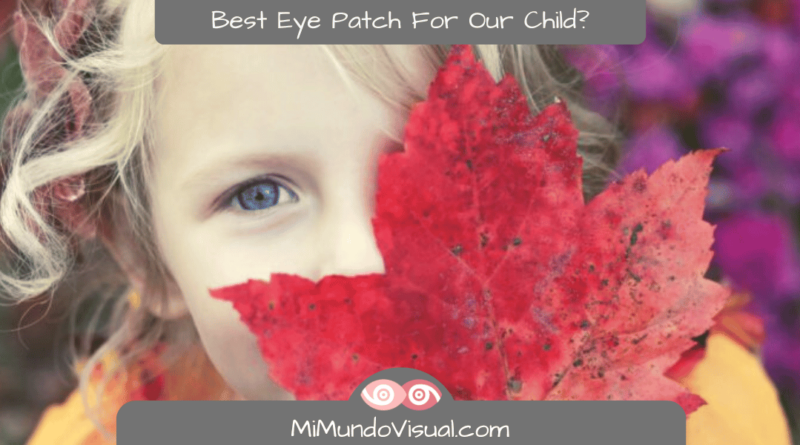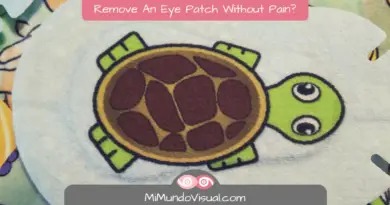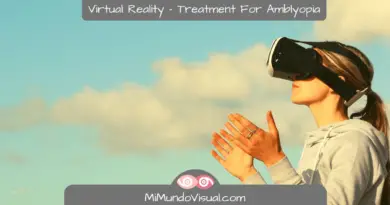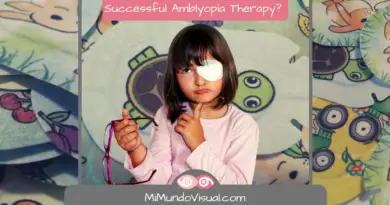How To Choose The Best Eye patch For Our Child?
Table Of Contents
All About Amblyopia Eye Patch Therapy
- 7 Tips On How To Be Successful With Amblyopia Therapy For Your Child
- How To Remove An Eye Patch Without Pain?
- 6 Eye Patch Therapy Inconveniences We Are Not Told About
- How To Choose The Best Eye Patch For My Child?
- 5 Activities To Do While Wearing An Eye Patch
Download Free Amblyopia Guide

The ophthalmologist diagnosed our child with amblyopia and told us they must wear an eye patch or an eye pad.
How can we choose the best eye patch for our child?
At first, when we think of an eye patch, we might think of the typical black eye patch we’ve seen in pirate movies. Luckily, nowadays, there are all kinds of different kinds of eye patches for you to choose from.
If we do a little research on the web. We’ll notice that there are many alternatives to consider.
Some come with an elastic, others are adhesive. You’ll also find some eyepatches are made of fabric, while others are made from silicone. You’ll also find a wide variety of different designs that will make it somewhat more motivating to wear for our child.
Before choosing the eyepatch, however, the most important thing is to talk to our child and explain why it is necessary to wear the eyepatch. Allowing them to be part of choosing an eyepatch might help with the motivation to wear it.
Acceptance of wearing an eyepatch is not easy for a child!
It is not always easy to accept when a new reality comes knocking at our door.
Let’s imagine for a moment that we are the protagonists of this story:
We have lived our entire life with a dominant eye that suppressed the vision of the other. However, we didn’t even notice. (To a child with Amblyopia, their vision is ‘normal’ – they cannot compare)
Then one day, we are forced to cover the dominant eye, our best eye. Suddenly we have to see the world through a small open window offered to us through our amblyopic eye, which lacks visual acuity. Add to that glasses or lenses for optical correction.
Needless to say that we’ll need to do everything in our power to motivate our child during this long road to recovery and help them understand why
they have to wear an eye patch.
Try to use language your child can understand and let them know that the effort made today will greatly benefit them tomorrow.
Occlusion therapy, in some cases, can last for years, which is not easy to accept.
Being consistent will be challenging, so motivation will play a key role here. It’s better to go step by step.
As the development of the therapy depends on the results obtained, it is impossible to make long-term predictions of how long occlusion therapy and other therapies will last. So it is preferable to live day by day, with optimism and positivity.
Try to involve people around your child and make them aware of the treatment. Informing them of the therapy so that they know its importance and can help our child as much as possible and hopefully improve social acceptance.
We can all understand how difficult it can be to accept wearing a patched eye in public.
At the same time, we can turn the eye patch into a fun and friendly companion which can accompany us on this journey that we are about to begin. We can decorate it or choose the one we like the most, which makes us feel better.
Let’s learn about the types of eyepatches you’ll find in the market and see which one best suits our situation.

Different Types Of Eye Patches For Amblyopia Treatment
There are different types of suitable eye patches that you can purchase online or in a pharmacy.
Some fit onto the glasses, and others, on the contrary, are meant to cover the face. Their function is the same! Cover the dominant eye so that the lazy eye can do the work and provide vision. Just make sure that your child is not ‘cheating’! The dominant eye should not be able to ‘see’ anything.
Adhesive Patch
The adhesive patch has glue on the edges and adheres completely around the eye. It has a cushioned part in the center, where the eye remains at rest.
It is very effective if the occlusion treatment requires the eye to be covered for many hours. It does not move, which prevents light from penetrating the covered eye and assures you that the eye is effectively covered.
Adhesive eyepatches are, in general, difficult to remove for younger children on their own.
With respect to making the adhesive patch more attractive:,
either choose a white patch that you decorate to your own liking or choose a patch with a fun design or color that the child favors. Remember that motivation is everything!
From our personal experience, we have tested 3M Opticlude patches and Ortopad patches.
We prefer the convenience of the latter when it comes to removing them. We have found that when removing the Opticlude patches, there are usually traces of glue on the face, and they are hard to remove. Traces of glue will possibly cause skin irritation and make it uncomfortable or even impossible to continue as a daily choice.
If you want to learn some tips to prevent this from happening, read the following article on how to remove an eye patch without pain, which we wrote based on what we had to learn the hard way.
In addition to the printed motifs, our daughter prefers the drawings of the Ortopad patches. But that’s up to personal taste, of course.
Los parches Ortopad tienen tres tamaños: junior, medium y regular:
junior | 67 x 50 mm | 0 y 2 years |
medium | 76 x 54 mm | 2 y 4 years |
regular | 85 x 59 mm | 4 + |
These patches are latex free and completely cover the eye, preventing light from entering. They have two small cuts in the nose area to better adapt to the nose. In addition, it is possible to customize up to 100 patches by choosing from 30 designs.

Eye Patch Made Of Fabric
There are two types of fabric patches, those that fit around the head (pirate type) and those that fit over the glasses.
The advantage of fabric eye patches is that they are easy to put on and take off.
Fabric Eye Patches do not utilize glue, so they won’t irritate the skin, and there is no glue residue on the face.
Besides, if they are used for visual exercises, putting them on and removing them as needed is very comfortable.
Various designs, fabrics, and motifs exist for us to choose from.
The downside of these eye patches is that, in many cases, it is difficult to cover the dominant eye entirely, and light enters from the sides, allowing the dominant eye to cheat a little.
Pirate-type eye patches: The cord holding the eye patch can be annoying and uncomfortable in the nose area or the eyelid if it is very tense.
You can find plenty of beautiful designs online. If you are adventurous, you could try to make the eyepatches yourself.
So if you are handy with a needle or sewing machine, many websites show and teach how to make a homemade eye patch.
Silicone Eye Patch
A third type of Eye patch fit for occlusion therapy is rarely mentioned: the silicone eyepatch. The silicone eye patch comprises an oval silicone concave that surrounds the eye and is adapted with a suction cup on your child’s glasses.
We have found them available in two different sizes: large (50 mm) and small (30 mm), in 3 different colors: black, blue, and flesh color.
This is a very effective alternative to adhesive patches since we avoid having to peel the adhesive eyepatch off the face.
In addition, by using patches that are not disposable with each use, as is the case with fabric or silicone patches, we save money by being able to reuse them on countless occasions.
Which is the best eye patch?
The patch that best suits our child will always depend on the situation at any given moment.
Consider the duration of the occlusion therapy but also the potential other visual therapy that you have to combine.
If a child has to wear the patch for many hours and perform different types of activities or training, they will probably be more comfortable wearing an adhesive patch.
However, if the child only wears it for a couple of hours while doing active visual therapy exercises at home and has to take the patch off, then a cloth patch attached to the goggle or pirate type will be more comfortable.
Some professionals will favor the use of an adhesive patch, since it does not allow light to enter and a younger child cannot remove it by themself easily.
We have also found certain eye doctors say it does not matter what type of patch is used, as long as it is effective in occluding the eye.
Therefore, the best option would be to opt for a patch that allows good occlusion and is also comfortable, adapting well to our eye, our face and our daily life.
It is advisable to show it to our doctor so that they can tell us if it is suitable for the occlusion treatment to treat our child’s Amblyopia.
More About Amblyopia or Lazy Eye
- How Do I Know If I Have A Lazy Eye?
- What Causes Amblyopia Or Lazy Eye?
- How To Detect A Lazy Eye?
- What is Amblyopia?
- 6 Eye Patch Therapy Inconveniences We Are Not Told About
- How To Choose The Best Eye Patch For My Child?
- Contact Lenses For Children With Lazy Eye!
- 5 Questions About Lazy Eye In Adults!
- Lazy Eye In Adults – Little Everyday Difficulties That May Be Due To Amblyopia!




